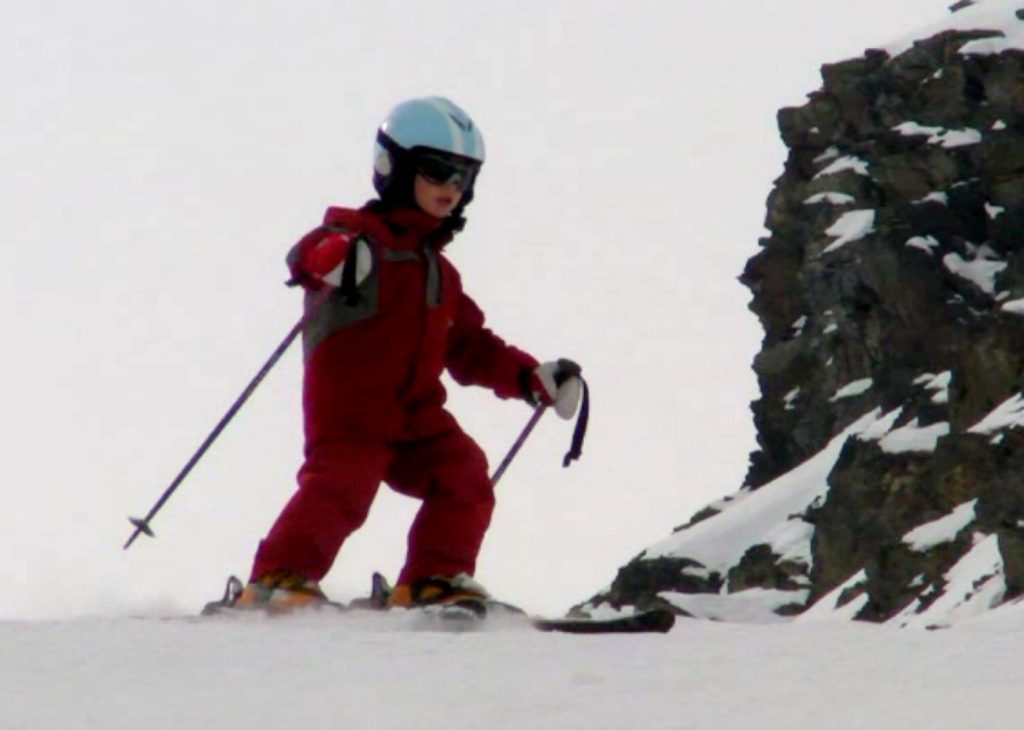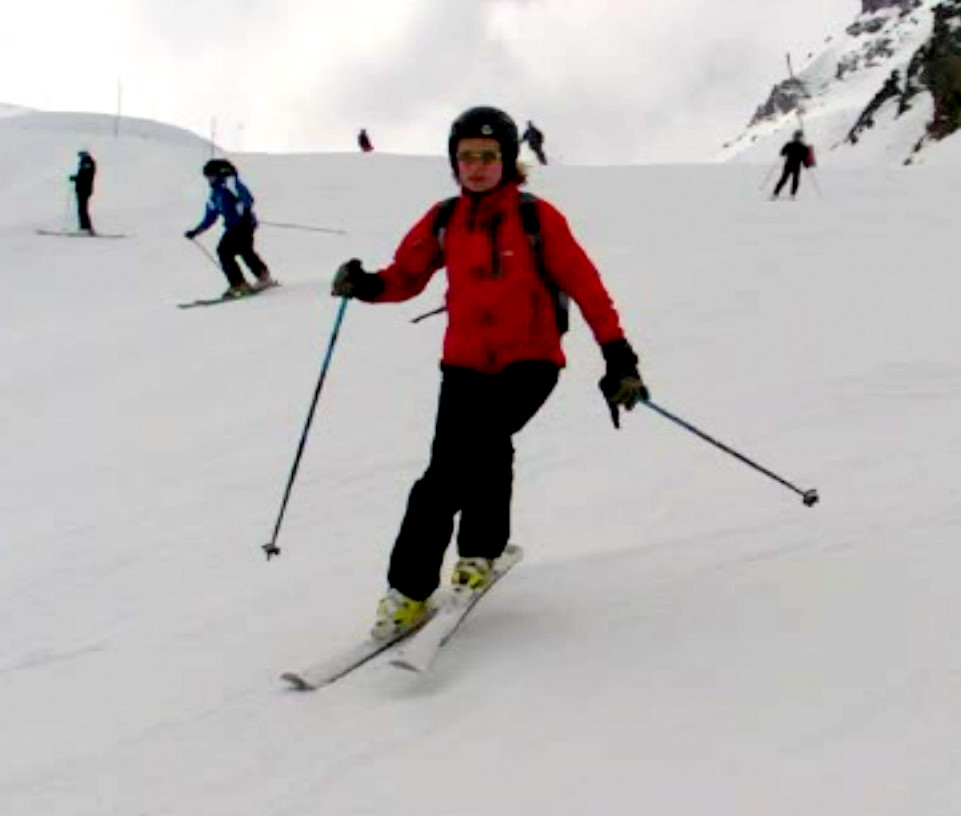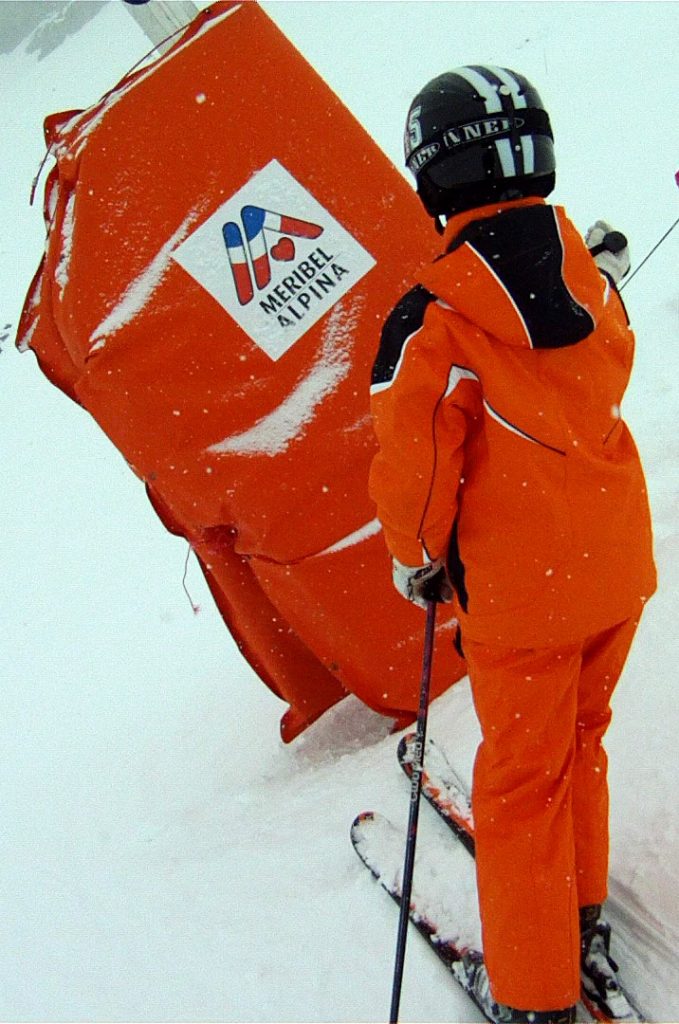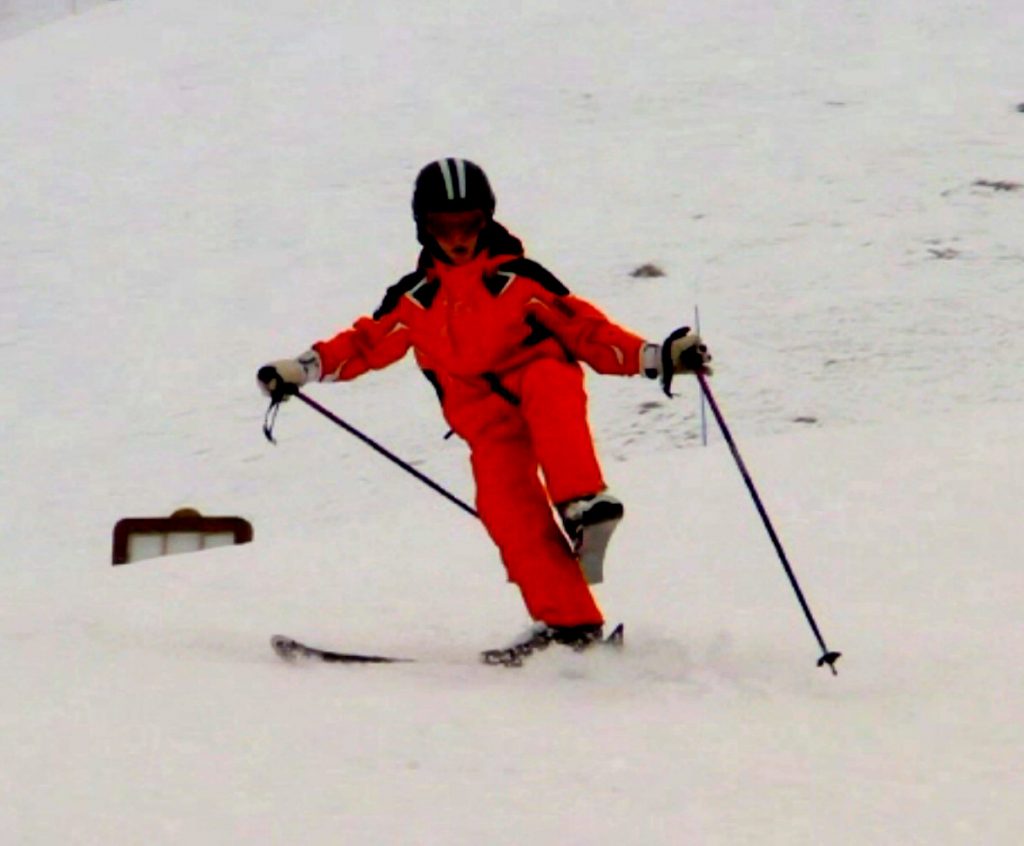Day Two
Timothy & Liliana
Day 2 and Timothy had clearly thought about his lesson in the bumps the day before because he was side-slipping and starting his turns parallel (“pulling inwards”) even on steep terrain right from the start. This is not really a surprise because as far as I can remember Timothy was not taught to turn with a snowplough and any stemming that he did do was spontaneous and not encouraged.
Liliana on the other hand was constantly making a small stem – both Liliana and Timothy are seen in the first few scenes of the video clip. To try to deal directly with this stem – which is probably unconscious – I asked that between each turn a short traverse on the uphill edge of the uphill ski be carried out and the turn started by moving the Centre of Mass into the new turn from this position. Liliana was able to do this without trouble but it’s unclear if she could really perceive the difference. It is impossible to stem when starting a turn in this way.
Liliana is still recovering from a very nasty ski accident last season so it is great to see her rapidly regaining confidence here and already skiing relatively fast on the piste but with a lot of control.
Rodian
The afternoon was spent with Rodain with a view to improving his bump skiing – if we could find any bumps in the fog. Rodian’s English is very good now which makes communication effective. He has developed into a very capable skier and despite not skiing very much during the year he appears to forget nothing that he learns. His body awareness is very good because he is able to change and adapt rapidly to very difficult demands. This is the first year that I have tried to teach Rodain “compression” turns for bumps and he could do this immediately. I have encountered internationally (ISIA) certified professionals who cannot do this.
Bump skiing is best initially learned on flat snow with a shallow gradient. The compression turn is a pivot turn executed by exiting the previous turn (or traverse) with a large amplitude flexing of the legs – to 90° at both the knees and hips, followed by a full extension of the legs into the trough (hole) after the bump. This is a complete reversal of standard timing. It requires a strong support from the ski pole and a delayed changing of edges at the turn initiation with excellent upper/lower body separation. We worked for a while developing this timing on the flat where it has to be exaggerated and there is no management issue present in dealing with actual bumps.
To help indirectly with the bump skiing I wanted to sort out something else that had been bothering me about Rodian’s skiing. He was bracing against the outside leg and leaving it behind in the turn during long radius or carving turns. I told him to bring the outside foot forward and to bend more at the hips with the upper body facing slightly more downhill – all of this with a view to being able to lower the body (CM) further into the turn towards the end of the turn. To help with this I had to physically hold and manipulate him until he could feel the appropriate position. Once he understood this he was able to do it in skiing immediately – the “before” and “after” video scenes are included above. This repositioning of the body/feet and the ability to lower the body more into the turn had Rodian saying that he could feel the skis turning more strongly. This improvement would also help him to control his upper/lower (U/L) body separation better in the bumps.
For the pivot and bumps we worked at getting the turn to initiate with the “downhill facing upper body” coming over the skis (keeping them on the uphill edges) until the skis slipped into the turn automatically. This was to stop Rodian from lifting the lower ski – a fault caused by not bringing the Center of Mass over and into the new turn enough.
Previously (for long turns) I had succeeded in getting Rodian to lower the CM down better into the turn to build up pressure and control his turns better but now from this same relaxed position and stance with good U/L body separation he now needed to come back up out of the turn and continue out over the skis (without changing edges) and use the pole as support downhill. He was able to do this correctly in the exercise and easily slipped into his new turns – but he didn’t manage to keep this working when actually skiing in the bumps. This motion of the CM into the new turn has to happen regardless of the timing used (skating or compression). With the compression turn the CM falls into the new turn from a very low position and this can be difficult to achieve to begin with – it takes a lot of confidence and the impact and compression of an actual bump helps to make this natural.
To further improve the coordination for upper/lower body separation I had Rodian do a difficult exercise where he had to ski on one ski only but meanwhile hold the other ski up in the air with the tip constantly pointing downhill. He managed this very well. This exercise also improves pivoting skill in general.
We did some pivoted turns with skating timing so as to clarify the difference between the standard (skating) “down/up” timing and the compression “up/down” timing. Rodian handled this tricky issue very well and his successful results are included in the video.
We did find a few cloud free bumps to work in and were able to go fast enough to get the bumps to cause the “compression” of the legs and create a rhythm – instead of artificially creating the compression on the flat by retracting the legs. Rodian was still too much on the accelerating inside edge of his ski at the start of the turns but at the end he managed to stop this and us a braking pivot – from uphill edge to uphill edge all the way down the bumps – while controlling his U/L body separation. His only shortcoming was that the CM was being held uphill a bit too much and so not contributing the turn initiation as much as it could – but better bumps would have helped with that.




